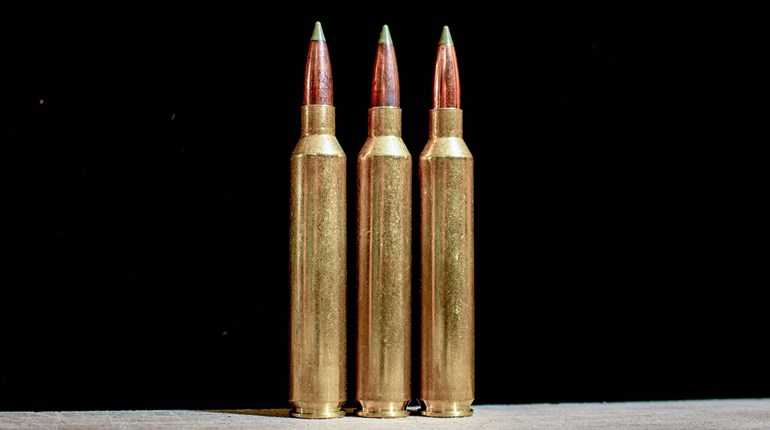
Law enforcement officers normally carry a second handgun. Called a backup, it allows them to pursue and resolve a criminal incident should their primary handgun be damaged or malfunction. It’s a common sense tactic.

The majority of states that issue concealed-carry permits allow for the carrying of multiple handguns. Not many civilians do so, however, but there is a degree of understandable logic there.
The legal mandate for a civilian concealed-carry licensee is to survive a violent encounter; nothing more. There is no obligation to pursue and bring the perpetrator to justice. In fact, most law enforcement agencies would prefer you don’t attempt that. All the law truly allows is to survive. That often takes few, if any, rounds being fired.
Data cited by NRA shows that in many potentially violent encounters, the mere display of a handgun is enough to end them. In those incidents where shots need to be fired, FBI statistics show that it takes an average of three rounds to stop the attack. From a such standpoint, a civilian with a seven to 16-shot semi-automatic might reasonably consider a second handgun a bit excessive.
Statistics can be comforting things, but those who depend upon them to ensure their safety stand an excellent chance of becoming one. In this case, one important factor is often overlooked.

Common law allows a civilian to use deadly force when they, or someone they are morally obligated to protect, are faced with “the imminent threat of death or serious bodily injury.” However, the law also takes a dim view of those who brandish a handgun before an imminent threat has manifested itself. This can result in fines, possible jail time, the loss of your carry permit, a possible civil lawsuit and, in the case of a felony conviction, your right to own a firearm.
It can depend upon whether the authorities view what you faced as an “imminent threat,” or merely an innocent social encounter you misinterpreted. Unhappily, in today’s world, the two can merge quickly.
A common tactic among street thugs today is one I call AECA (Approach/Engage/Close/Attack). It normally starts with the predator approaching the intended victim and engaging in innocent conversation. “Hey man, got a cigarette?” … “Got change for a $10?”... “Got a light?” This is followed by the predator slowly moving into your personal space. Sometimes there may be one, or more, of his cohorts easing in from your sides. Once the distance has been closed, “Attack” follows.

Those who venture into harm’s way on a daily basis—law enforcement and military personnel—will tell you the hairs on the back of your neck seldom lie. Yours may be sending you frantic text messages as an approach unfolds. But what do you do? Nothing has yet happened and no “imminent threat” has occurred. Are you justified in drawing your gun? If you do, and this turns out to be one of the rare occasions when your hairs did lie, might you be viewed as the criminal?
Yet, if the “imminent threat” manifests itself, will you be able to access your handgun?
A classic example of an AECA attack happened to me a few years back.
I had an appointment at dawn about two hours south of me, but I had neglected to visit the bank lately and my wallet was a bit thin. That was not a problem, as there were several ATMs along my route. On my way out at 4 a.m., I stopped at one that was in the “good” section of the small southern town I call home. However, mindful of the early morning hour, I made a couple of passes around the parking lot, scanned for possible threats, and saw nothing. Pulling into the fire lane directly in front of the deserted ATM, I stepped out to get some cash.

Twenty feet away and approaching me at a steady pace was a large individual whose appearance and demeanor would preclude me from inviting him into my home for a dinner party.
“Hey man, got change for a $20?” he asked.
I’d no sooner registered that when I caught movement to my right. A slightly smaller version of the first thug appeared around the front of my truck. He was about 6 feet away on my right and slowly moving closer. I was rapidly becoming boxed in.
As a matter of established law, you cannot legally determine the intent of an individual unless it is manifested by words or deeds. Nothing had yet happened, but it was obvious what was about to. Law-abiding citizens don’t hang around an ATM at 4 a.m. hoping some good Samaritan will just happen by with change for a $20.
The hairs on the back of my neck were screaming! There was a 9 mm handgun on my right hip, but, at that moment, it was more of a liability than an asset.
Thug 2 was now 3 feet to my right. Had I swept my right hand back under my outer shirt in an obvious movement to access that gun, he could have been on me in a flash and grabbed my arm. This 5-foot, 8-inch senior citizen would then be fighting for possession of the gun with two young thugs big enough to play linebacker in the NFL. I would likely lose that encounter and they would now have my gun, which could prove fatal.
All that was averted because as soon as I saw Thug 1 approaching I slipped my left hand into my front pants pocket and curled it around the grip of a .38 Spl. snubby stuffed with five rounds of +P ammo. My range tests with an electronic timer showed me that gun could come out of the pocket and deliver an accurate center-mass hit at 3 yards in less than .65 seconds.

I raised my hand slightly and they caught the movement of my arm. A hand in a pocket is a nonchalant gesture to most of the public, but criminals operate on a different wavelength. They recognized what it might mean and hesitated. That gave me time to step to my left, open a bit of distance, and tell them in no uncertain terms that not only did I not have change for a $20 but, “Gentlemen, you are getting a bit too close. Back off now!”
Thug 1 took a tentative step toward me and I eased the gun just far enough out of the pocket to show them a subtle glint of metal, while continuing to step back. They weren’t candidates for the MENSA Society, but they were smart enough to realize that they had just received a failing grade in Victim Selection Process 101.
The only thing that allowed me to extricate myself from a situation all too common today was that snubby tucked into my pocket. I could access it in a discreet manner, yet employ it instantaneously, under conditions where my primary handgun would have been useless—or worse.
For an armed citizen, it’s often the most effective employment of a second gun. It allows you to have your hand on a concealed handgun in a casual and totally non-threatening manner, yet be able to bring that gun into action quickly and extricate yourself from a potentially dangerous situation. And, if the threat continues, it gives you time to access your primary gun. Or, if your primary is grabbed, gives you a means to get it back.
The ideal gun for this role would be a poor choice for a gunfight. It needs to be compact, lightweight and quick to operate with either hand—without the need to manipulate safeties or cock a hammer. It must easily slip into any available pocket, fanny pack or other hidden position where it can be accessed in a casual manner. It also has to be equally easy to quickly extract from that position. That means it has to be as smooth as the proverbial “well-used bar of soap”—without protrusions like exposed hammers, beavertails and other design characteristics that would impede a smooth draw from deep concealment.
There are a number of compact double-action (DA) revolvers and lightweight semi-automatics that meet the above criteria. But, one additional factor can make semi-autos a problematic choice.

If the situation has reached the “Attack” phase, the gun might have to be used at contact distances. It might be pressed against the assailant, or hands or clothing may be in contact with the gun. Semi-automatics with an unlocking barrel can be pushed out of battery and fail to fire when in contact with an attacker. If they do fire, and hands or loose clothing contact the moving slide during its cycling, a failure to eject can occur. This malfunction requires both hands and a bit of time to clear, and you may not have both hands or the time available. There are some semi-autos that use a tip-up, non-unlocking barrel that can operate when in contact. Most are chambered for .22 LR or .25 ACP. The Beretta 3032 .32 ACP Tomcat is about the most powerful in the tip-up barrel class, but it does hold eight rounds.
Double-action revolvers are a better choice for close-quarters use. They have none of the drawbacks of semi-automatics. They’ll fire when in contact, and as long as one can keep pulling the trigger, they will continue to fire until empty.
There’s an extensive array of DA snubby revolvers on the market. Many are available with smooth contours and shrouded hammers that will not hang up on the draw. Among the lightest currently offered are the Smith & Wesson M&P 340 and the polymer-frame Ruger LCR.
Regardless of the model chosen, the carry position can be critically important. The most effective location is on the support-hand side opposite your primary gun. It should be carried where it can be reached with a casual, covert movement, yet be instantly employed. Your wardrobe will play a major role here, but ankle holsters, shoulder holsters and most belt holsters are a poor choice, since these require an obviously overt movement to acquire the gun.
Pocket carry is very effective. The support-side front pocket of slacks, jeans or shorts is a convenient location that can be casually accessed. In cooler weather, the weak-side coat pocket makes sense. When carrying in a pocket, a pocket holster is essential. These keep the gun from shifting and provide a consistent grip location, as well as preventing the inevitable pocket lint from entering the action and possibly causing a malfunction. Most holster makers offer them, and I have used models from Galco, Blackhawk and DeSantis.
If your wardrobe prevents pocket carry, additional options include a compact fanny pack worn in the front, or a belly-band holster worn in the lower center of the stomach. Either of these is an option for female fashions, and the belly band is especially good since the bustline aids in concealing the gun. Your wardrobe will dictate where the gun can go.
There is a military term defining combat tactics: OODA Loop (Observe/Orient/Decide/Act). These are the actions taken by an attacking force. The military’s response to defeating this is to “get inside their OODA Loop.” That means thwarting their plan by presenting unexpected responses that disrupt their attack and cause them to hesitate, rethink and alter their actions. Doing so will stall their attack and provide time for an effective counter-attack to neutralize the threat.
Criminals may not know military terminology, but they do use the same OODA Loop tactics. And, nothing quite says “I’m inside your OODA Loop” like the sudden and unexpected appearance of a handgun pointed at an assailant’s stomach. For concealed-carry-permit holders, that is the second-gun advantage.






































